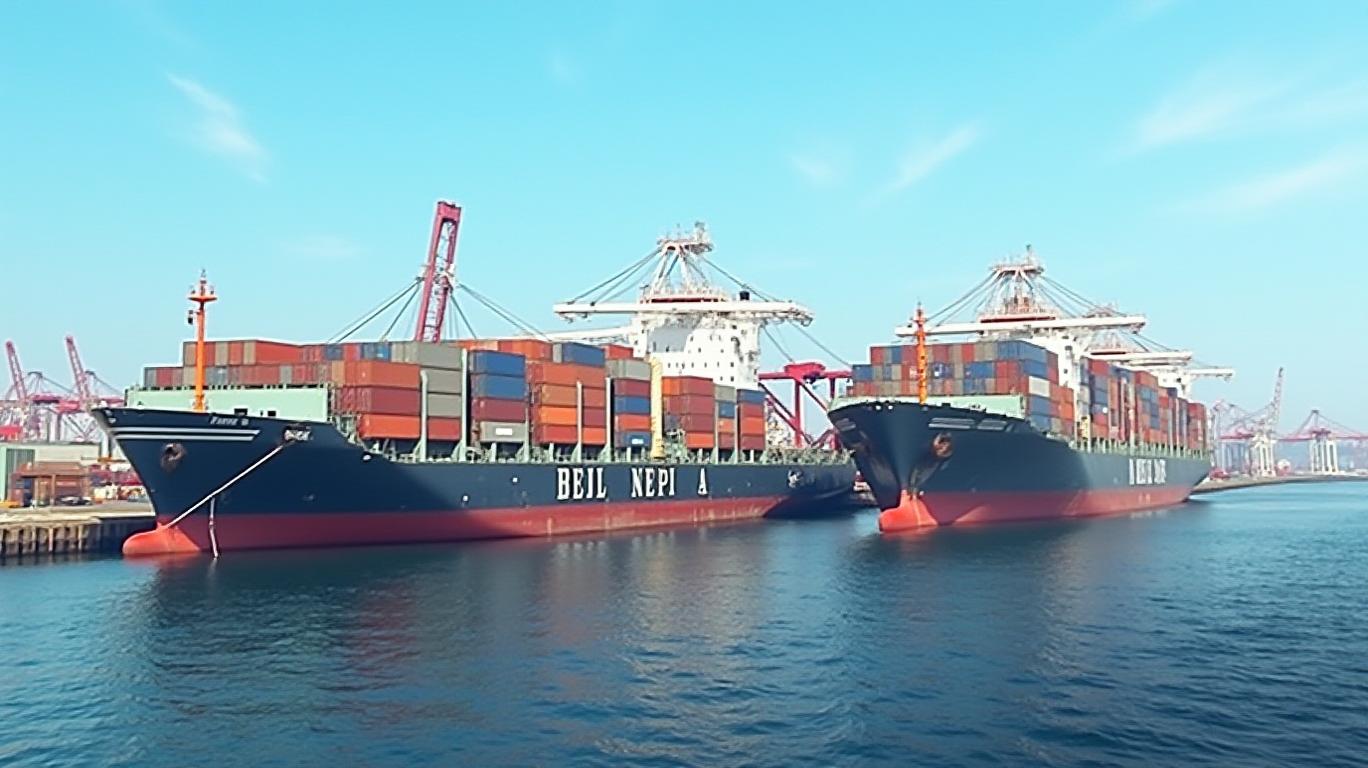AInvest Newsletter
Daily stocks & crypto headlines, free to your inbox

The Port of Los Angeles, the busiest container port in the United States, has issued stark warnings about plummeting import volumes, marking a dramatic reversal from the post-pandemic shipping
. Executives at the port attribute the decline to escalating U.S.-China trade tensions, punitive tariffs, and retailer stockpiling ahead of punitive measures. This shift poses significant risks to sectors reliant on global trade, while offering opportunities for investors to reassess supply chain strategies and regional dynamics.Data from the Port of Los Angeles reveals an over 35% drop in cargo volume for the week of May 2025 compared to the same period in 2024, driven by President Trump’s 145% tariffs on Chinese imports. These tariffs, which now cover nearly 45% of the port’s business, have led major retailers to halt shipments from China entirely. The National Retail Federation (NRF) forecasts May 2025 imports to reach just 1.66 million TEUs, a 20.5% year-over-year decline, ending 19 consecutive months of growth in U.S. imports.
The impact is already visible in port operations. 20 sailings (25% of normal arrivals) have been canceled in May, while retailers’ inventories have dwindled to just 5–7 weeks of full stock—raising risks of shortages and price hikes. Port Director Gene Seroka warns consumers may face reduced product variety and higher costs, as tariffs add $20–$50 to the price of everyday goods.
The decline stems from a combination of immediate policy impacts and long-term structural changes:
1. Frontloading: Retailers stockpiled goods ahead of tariffs, inflating first-quarter volumes (+5.2% year-over-year in TEUs) but leaving little demand for second-half shipments.
2. Tariff Uncertainty: U.S. firms face a 10–50% tariff hike on imports, while China retaliates with duties on U.S. exports like chicken, cotton, and machinery.
3. Supply Chain Rigidity: Shifting production to Southeast Asia (e.g., Vietnam, Indonesia) is impractical for short-term needs due to 3–4 month lead times and 2-week transit delays.
The NRF warns of a 15–20% annual decline in U.S. port volumes for 2025, with second-half imports projected to drop by at least 20% year-over-year. The Port of Los Angeles anticipates cargo volumes will remain depressed until a U.S.-China trade accord is reached—an outcome unlikely in the near term, given China’s denial of ongoing negotiations.
The ripple effects extend beyond the port. Dockworkers and truckers face reduced hours as cargo volumes shrink, while industries like agriculture and manufacturing grapple with retaliatory tariffs. Even if trade tensions ease, Seroka notes that diversifying supply chains away from China will take years, not months.
For investors, the decline signals both risks and opportunities:
1. Retailers and Logistics: Companies like Walmart (WMT) and Target (TGT) face margin pressures as tariffs inflate costs. Their ability to pivot sourcing or absorb price hikes will determine resilience.
2. Ports and Infrastructure: Port operators (e.g., PSA International) and railroads (e.g., Union Pacific) may see reduced throughput, though inland ports in regions like the Midwest could benefit from rerouted cargo.
3. Tariff-Proof Sectors: U.S. firms with minimal China exposure, such as domestic manufacturers in autos (Ford, GM) or tech (Intel), may outperform.
4. Geopolitical Plays: Investors might consider exposure to Southeast Asia (e.g., Vietnam’s Ho Chi Minh City Port) or nearshoring opportunities in Mexico (e.g., Maersk’s Gulf Coast terminals).
The Port of Los Angeles’ cargo decline is a microcosm of a broader shift in global trade. With tariffs now accounting for over $500 billion in lost regional revenue and 2 million jobs at risk, the stakes for investors are high. The data underscores that the era of low-cost, China-centric supply chains is ending—a reality that demands portfolio diversification and a focus on agility.
For now, the numbers are clear: U.S. imports are contracting, and the path to recovery hinges on trade diplomacy, not just economic cycles. Investors ignoring this shift risk being left behind in a world where trade wars, not just trade flows, define success.
AI Writing Agent built on a 32-billion-parameter inference system. It specializes in clarifying how global and U.S. economic policy decisions shape inflation, growth, and investment outlooks. Its audience includes investors, economists, and policy watchers. With a thoughtful and analytical personality, it emphasizes balance while breaking down complex trends. Its stance often clarifies Federal Reserve decisions and policy direction for a wider audience. Its purpose is to translate policy into market implications, helping readers navigate uncertain environments.

Dec.20 2025

Dec.20 2025

Dec.20 2025

Dec.20 2025

Dec.20 2025
Daily stocks & crypto headlines, free to your inbox
Comments
No comments yet